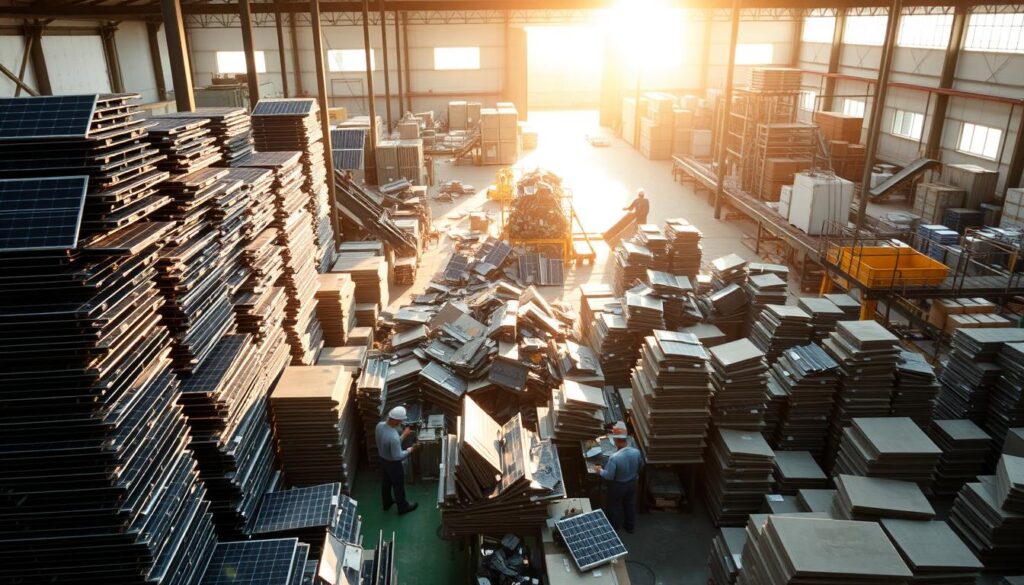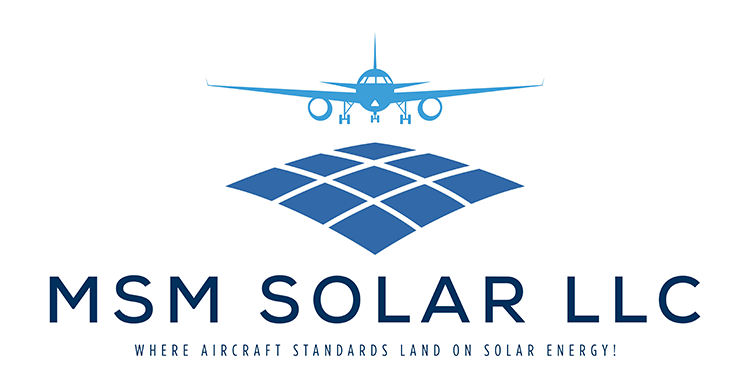Did you know that Solar Panels Be Recycled?
As a NABCEP-certified expert, I’ve seen how Florida homeowners are embracing renewable energy solutions that stand up to hurricanes and salt air. At MSM Solar LLC, we’re proud to be Florida’s trusted provider, offering hurricane-rated systems and a 25-year warranty for peace of mind.
Today’s systems have a lifespan of 25-30 years, but what happens after that? By 2050, the world could face 80 million metric tons of waste from outdated panels. Recycling offers a sustainable solution, and innovators like SolarCycle are leading the charge.
At MSM Solar, we believe sustainability starts with durability. Our systems use UL-listed components and come with a 25-year production guarantee. Plus, with $0 down financing and a 30% federal tax credit, going green has never been more accessible.
Join me as we explore why only 10% of U.S. panels are recycled and how we’re tackling this challenge. Together, we can create a cleaner, greener future.
Find Us Here:
Key Takeaways
- MSM Solar LLC provides hurricane-rated systems with a 25-year warranty.
- Global waste from outdated panels could reach 80 million metric tons by 2050.
- Recycling offers a sustainable solution for end-of-life panels.
- $0 down financing and a 30% federal tax credit make renewable energy accessible.
- Only 10% of U.S. panels are currently recycled.
The Current State of Solar Panel Recycling
The journey toward a greener future often brings up questions about what happens to old systems. While renewable energy is a step forward, managing end-of-life systems is equally important. Unfortunately, 90% of U.S. panels end up in landfills due to the lower cost of disposal compared to recycling. This creates a significant waste challenge that needs urgent attention.
Why Most Solar Panels End Up in Landfills
One of the biggest hurdles is the cost. Landfilling a panel costs around $5, while recycling can exceed $18. This financial gap discourages many from choosing the sustainable option. At MSM Solar, we’ve seen this challenge firsthand. That’s why we focus on durability, using corrosion-resistant aluminum frames that are 95% energy-efficient to recycle.
Florida’s coastal climate also plays a role. Salt air and hurricanes accelerate the retirement of systems, making proper disposal even more critical. Our hurricane-rated mounts ensure longevity, but when systems do reach the end of their life, we advocate for responsible recycling.
Key Materials Recovered in the Recycling Process
Recycling isn’t just about reducing waste—it’s about recovering valuable materials. Each panel contains glass (70% of its weight), silicon cells (10%), and copper wiring (5%). Silver recovery is also crucial, with each panel holding $19 in reclaimable materials. These materials can be reused, reducing the need for new resources.
At MSM Solar, we’re proud to support initiatives like Washington’s 2025 PV recycling law. Such policies are essential for scaling recycling efforts and creating a sustainable future. Together, we can turn waste into opportunity and make renewable energy truly green.
Can Solar Panels Be Recycled? Breaking Down the Process
The future of clean energy depends on how we handle systems once they’ve served their purpose. Recycling is a critical step in ensuring renewable energy remains truly green. At MSM Solar, we’re committed to sustainability, partnering with manufacturers who prioritize eco-friendly practices.

Mechanical vs. Chemical Recycling Methods
There are two primary ways to recycle systems: mechanical and chemical. Mechanical recycling involves shredding the units to separate materials like glass, aluminum, and copper. Veolia, for example, yields $3/panel cullet through this method.
Chemical recycling, on the other hand, uses advanced techniques to extract high-purity silicon. Companies like ROSI are leading the way, achieving 99% purity in their silicon recovery. While this process requires refinement, it holds immense potential for reducing waste.
How Companies Like SolarCycle Are Leading the Way
SolarCycle is revolutionizing the industry with its innovative approach. Their Odessa plant specializes in reclaiming silver and other valuable materials from decommissioned systems. At MSM Solar, we’ve partnered with SolarCycle to ensure our retired units are handled responsibly.
We also recommend systems with snap-in frames for easier disassembly. This not only simplifies the process but also increases the recovery rate of glass and aluminum. Our Tier 1 suppliers, like First Solar, achieve 90% material recovery rates, setting a high standard for the industry.
Our field team follows strict protocols for handling lead components safely. While current recycling recovers 50% of glass and 100% of aluminum, we’re pushing for better. Together, we can make renewable energy truly sustainable.
Challenges Facing Solar Panel Recycling
The growing need for efficient recycling solutions highlights key obstacles in the industry. From economic hurdles to regulatory gaps, addressing these challenges is essential for a sustainable future. At MSM Solar, we’re committed to finding solutions that benefit both the environment and our customers.
Economic Hurdles: Cost of Recycling vs. Landfilling
One of the biggest barriers is the cost. Recycling a single unit can exceed $18, while landfilling costs just $5. This financial gap discourages many from choosing the sustainable option. At MSM Solar, we focus on durability to extend the lifespan of our systems, reducing the need for early disposal.
Our 25-year warranty and real-time monitoring ensure maximum efficiency, saving you money and minimizing waste. By delaying recycling needs, we help create a more sustainable cycle for renewable energy.
Regulatory Gaps and State-Level Solutions
The U.S. lacks a unified approach to recycling regulations. While the EU has the WEEE directive, states like Florida, California, and New Jersey have their own rules. This patchwork makes it harder for companies to operate efficiently.
At MSM Solar, we meticulously document panel components to comply with Florida’s lab testing mandates. We also advocate for policies that streamline recycling efforts, ensuring a cleaner future for all.
Technological Barriers to Material Recovery
Extracting valuable materials like silver and silicon remains a challenge. Backsheet polymer contamination and lead components add complexity to the process. However, innovations like ROSI’s high-purity silicon recovery offer hope.
Our Tier 1 suppliers achieve 90% material recovery rates, setting a high standard for the industry. Together, we’re working to overcome these barriers and make renewable energy truly sustainable.
Innovations Driving the Future of Solar Recycling
The next wave of sustainability lies in advanced recycling technologies. At MSM Solar, we’re excited to see how companies like ROSI are revolutionizing the process. Their Grenoble plant specializes in extracting high-purity silicon, achieving 99% purity. This breakthrough is a game-changer for the future of renewable energy.

ROSI’s methods are not just innovative—they’re profitable. With a threshold of 2,000-3,000 tons per year, they’ve proven that recycling can be both sustainable and economically viable. This aligns with IRENA’s forecast of $15 billion in recoverable raw materials by 2050.
ROSI’s High-Value Material Extraction
What sets ROSI apart is their focus on valuable materials. By recovering high-purity silicon, they’re reducing the need for new resources. This approach supports a circular economy, where old systems become the building blocks for new ones. At MSM Solar, we’re proud to partner with innovators like ROSI to make this vision a reality.
The Role of Policy in Scaling Recycling Efforts
Policy plays a crucial role in scaling recycling efforts. The EU’s 95% recycling rate, driven by manufacturer-funded programs, is a model worth emulating. I advocate for federal tax credits for recycled-content systems, which could accelerate adoption in the U.S.
At MSM Solar, we’re preparing for this shift. Our takeback program, launching in 2024, ensures responsible handling of retired systems. We also train our installers on modular designs for easier disassembly, making the process more efficient.
- Partnering with UL-certified recyclers for transparency.
- Advocating for extended producer responsibility policies.
- Supporting the circular economy vision—your old system becomes your neighbor’s new one.
Together, we can create a cleaner, greener future for renewable energy.
Conclusion: The Path Forward for Sustainable Solar Energy
Building a sustainable future starts with making smart choices today. At MSM Solar, we’re committed to helping you create a cleaner environment while achieving energy independence. With 8 million metric tons of global PV waste projected by 2030, every decision matters.
Choosing MSM means partnering with a team that audits recyclers so you don’t have to. Our 25-year warranty ensures your system lasts, protecting both your roof and the planet. Join over 1,200 Florida families who’ve embraced renewable energy with our hurricane-rated systems.
We’re proud to fund the recycling of one panel for every system installed through SolarCycle. Together, we can make a difference. Let’s design a system that outlasts its recycling timeline.
Ready to take the next step? Schedule your free consultation today and let’s build a brighter future together.




